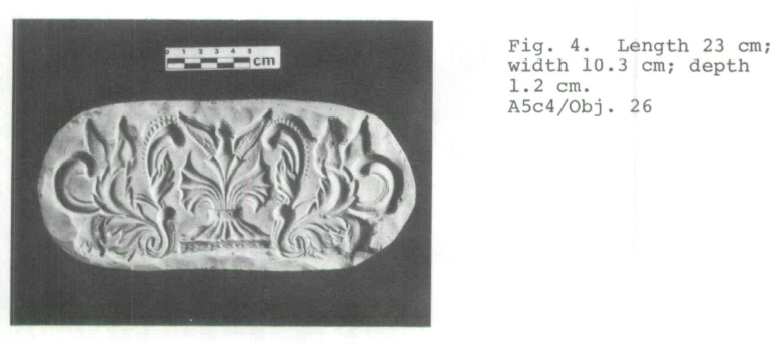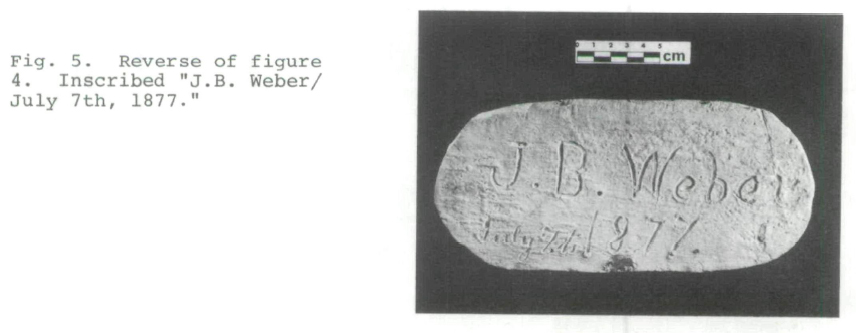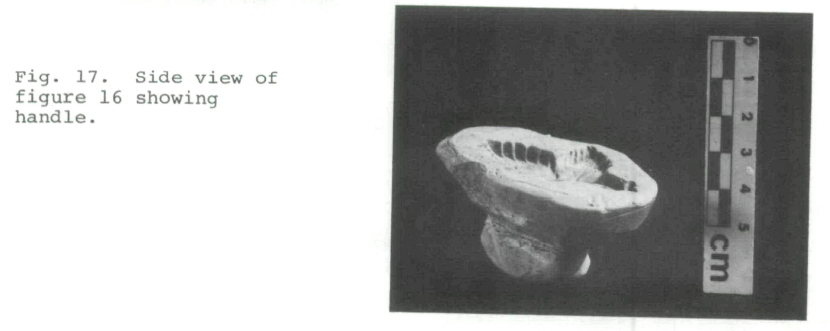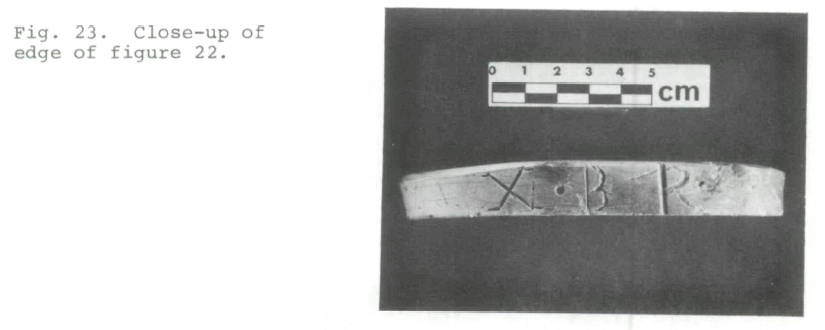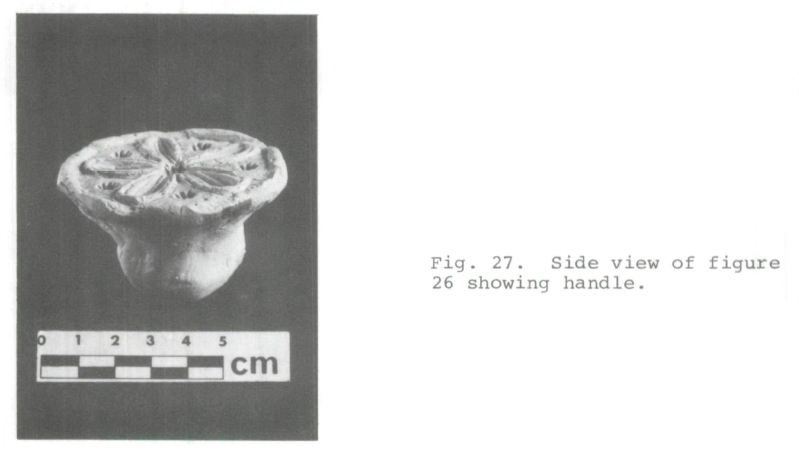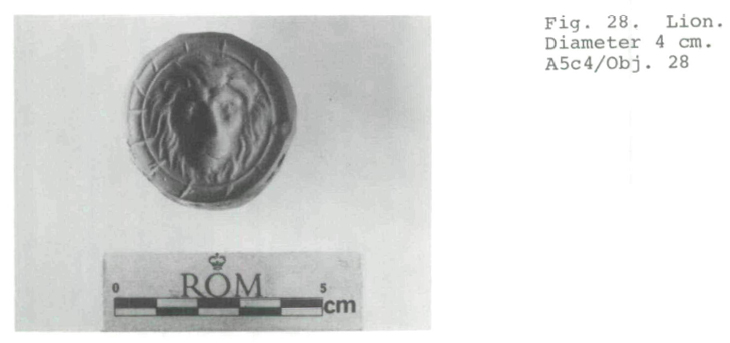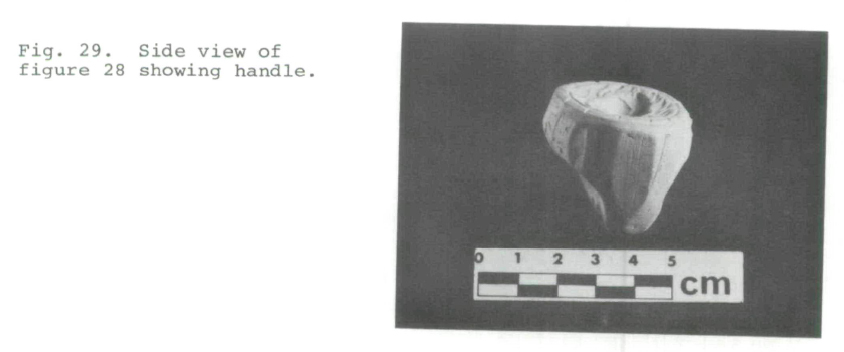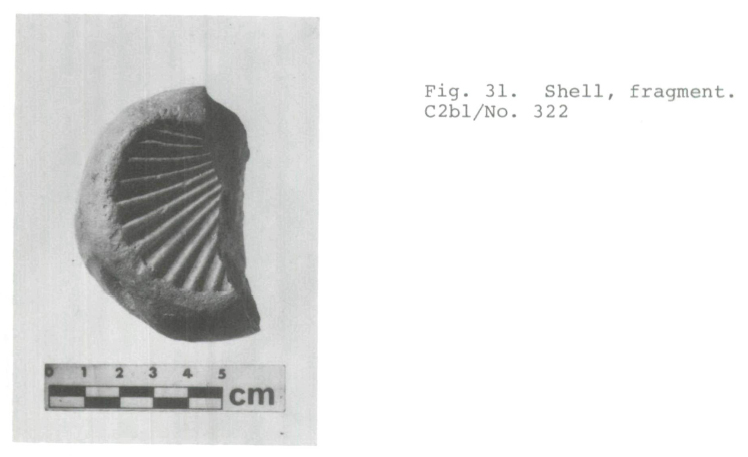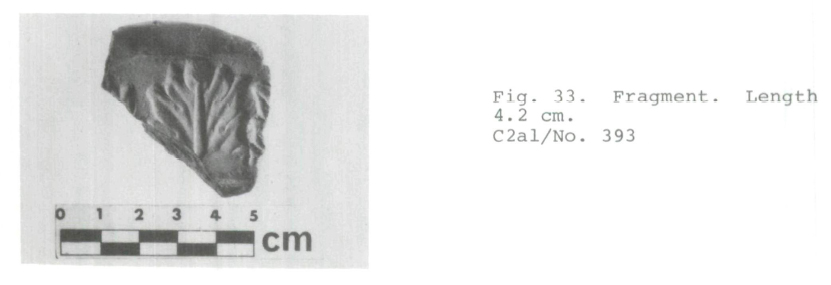Articles
A Catalogue of Sprig Moulds from Two Huron County, Ontario, Earthenware Potteries
1 During the years 1974-76 archaeological excavations at two Huron County earthenware potteries uncovered a large collection of potter's tools, including plaster of Paris forms for slip-moulding of wares, a plaster of Paris coggle-wheel and twenty-five sprig moulds, small hand-held forms for making decorative reliefs or "spriggings" for ornamentation on pottery.1
2 The use of spriggings on Ontario pottery, both stoneware and earthenware, extends back to the early 1850s. Justus Morton of Brantford (working dates: 1849-1856) used stoneware "appliqués" on water filters;2 the Hart Pottery at Picton also used "appliqués" beginning in the late 1850s. The earliest datable use of spriggings at earthenware potteries is established by the collection reported in this paper.
3 The use of spriggings to decorate pottery was only one method of producing decorative pieces. The advantage of the use of spriggings was that the wares could be formed on the potter's wheel and the spriggings attached to the completed pot. The second method of producing decorative wares was by casting, using two plaster of Paris forms. Slip, or liquid clay, was poured into the two forms and as the moulded pottery dried it was removed and assembled by the potter. In cast or moulded wares, the decoration was an integral part of the pot, while the use of spriggings meant that the decoration could be placed anywhere on the vessel.
A. HISTORY OF THE POTTERIES
Huron Pottery, Egmondville, Ontario
4 The Huron Pottery was in operation from 1852 until 1910, during which time it had five different owners. The first potter, Valentine Boehler, immigrated to Canada ca. 1852 from Alsace and settled first in New Hamburg, Waterloo County, where his brother Xavier Boehler had recently established a pottery on Peel Street. By 1854 Valentine Boehler had moved further west to establish his pottery in Egmondville on lots 2 and 3 on the north side of Stanley Street. Boehler continued to make pottery until 1873 when he formed a partnership with Jacob Weber, his future son-in-law. The partnership lasted until 1876 when Valentine Boehler retired from the business and left its operation to Jacob Weber.Weber continued to operate the factory until 1897 at which time his brother Joseph took control. He was followed by John C. Allan who ran the business for less than a year. By late 1900 Ferdinand Burgard, nephew of Valentine Boehler, became owner and continued to operate the works until 1910 when the business was closed and the building used as a butcher's shop.
5 From evidence obtained during the archaeological excavations sponsored by the Canadiana Department of the Royal Ontario Museum, the sprig moulds were used as early as 1874, during the partnership of Boehler and Weber, although it is possible that Valentine Boehler himself used sprig moulds. A water container base with applied spriggings produced by mould no. 12 is inscribed "Boehler & Weber/Makers/Egmondvillle/November the 29th/1874" (fig. 1) .
6 Five of the sprig moulds (figs. 4,13,14,19,21) from the Huron Pottery are inscribed with the year 1877 on the reverse side. One mould (figs. 4,5) has as its complete inscription, "J.B. Weber/July 7th, 1877." Another (figs. 22,23) has the initials "X.BR" on its edge, presumably the initials of Xavier Boehler who operated the New Hamburg Pottery from 1854 to 1881. The sprig moulds were still used during Burgard's time, as indicated in a contemporary photograph of the potter and his wares. 4
7 The spriggings were not applied to all types of pottery produced at the Huron Pottery, as only flower pot vases (figs. 2,3), hanging flower pots,5 and water containers have been recovered with these decorations. The spriggings may also have been applied to teapots, although the teapots illustrated in the photograph of Burgard and his wares, referred to above, may have been slip-cast.
David Burns Pottery, Holmesville, Ontario
8 David Burns was born in Northern Ireland in 1843 and when he was nine years old came with his family to Canada, settling on Yonge Street, Toronto. By 1861 he had left Toronto and was living on lot 46 of the Maitland Concession, Goderich Township. He operated a pottery and a farm until his death in 1907.
9 The David Burns Pottery, located some 10 miles west of Goderich, was excavated jointly by the Canadiana Department of the Royal Ontario Museum and Wilfrid Laurier University, Waterloo, Ontario, in May 1974.6 in the excavations some 8,000 sherds were recovered, together with a large number of objects, including three fragments of sprig moulds. Of the large number of sherds recovered in the month-long dig, none had any decorative spriggings. A search of the pottery in local collections has failed to turn up any pots with the decorations made from the three sprig moulds shown in this catalogue.
B. ORIGINS OF THE DESIGNS
10 Attempts to locate contemporary sources for the motifs of the sprig moulds shown in this catalogue have not been successful to date. Similar, but not identical, motifs were found on furniture, picture frames, woodenware and slip-cast pottery in southwestern Ontario during the mid nineteenth century, but beyond these general attributions, no specific sources can be cited.
11 Boehler, Weber and David Burns could have produced the designs themselves, or have had them made by one of the numerous local furniture craftsmen. It seems most probable to the author that the motifs were copied from European or American furniture, pottery or other household objects, a practice not unknown in the history of Canadian decorative arts.
12 An examination of moulded plaster ceilings and walls and terra cotta tiles in the Huron County area has likewise been of no help in determining a source of the motifs. In all instances, with the exception of the classical head (fig. 25), the moulds are too shallow to have been copied from such work.
13 The sprig mould fragment (fig. 32) from the David Burns Pottery has a stippled surface, suggesting it may have been made from another vessel, such as a salt-glazed tea caddy like those produced at the Staffordshire potteries in the late eighteenth and early nineteenth centuries.
C. GENERAL DESCRIPTION OF THE MOULDS
14 All the moulds from the Huron Pottery were found intact directly above the wooden floor of the cellar. Layers of debris above the floor included intact vessels and a large number of other potter's tools, presumably discarded at the time the building was abandoned as a pottery. The three sprig moulds from the David Burns Pottery were found in fragmentary condition, and were associated with ash and pottery debris around Kiln B, a rectangular pottery kiln. All but two of the Huron Pottery sprig moulds are negatives, that is they produce raised, or positive, spriggings which are then applied directly to the vessel. The two positive moulds (figs. 10,11) produce either impressed designs on the surface of the wares, or are applied to a plaque of clay that is in turn applied to a pot in the same way as spriggings produced by the negative moulds.
15 The Huron Pottery sprig moulds (figs. 4-30) vary in length from four to twenty-one centimeters. The very small moulds have a handle (illustrated in each case); the larger moulds have a set of finger-impressed grips on the side of the mould for holding it comfortably in the hand. All moulds illustrated in this catalogue are fired earthenware, but unglazed.
16 The sprig moulds are currently in the archaeological collection of the Canadiana Department of the Royal Ontario Museum. The moulds from the Huron Pottery were recovered during excavations licensed by the Minister of Culture and Recreation, Province of Ontario, under terms of the Ontario Heritage Act 1974, provisions of which state that all artifacts retrieved from the excavations are the property of the Province of Ontario until final deposition is decided by the Minister. For this reason, only the provenance and field object register numbers are indicated in the catalogue. Readers of this Bulletin who would like photographs of the sprig moulds or other potter's tools recovered in the excavations for study purposes should direct an inquiry to the author.
ILLUSTRATIONS
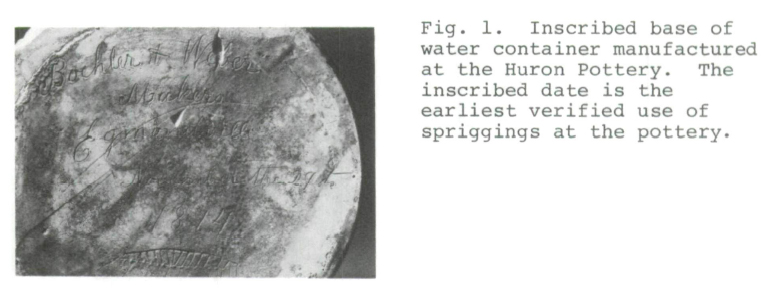 Display large image of Figure 1
Display large image of Figure 1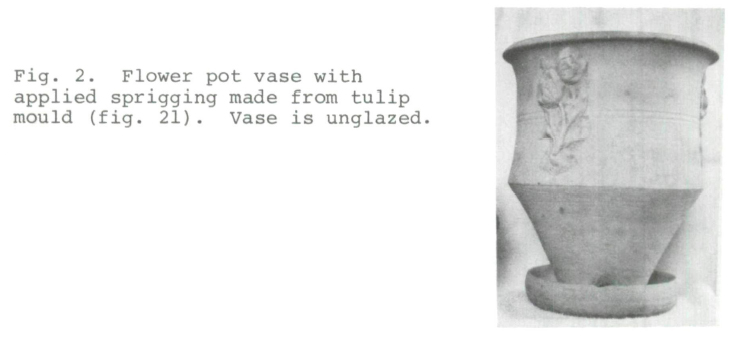 Display large image of Figure 2
Display large image of Figure 2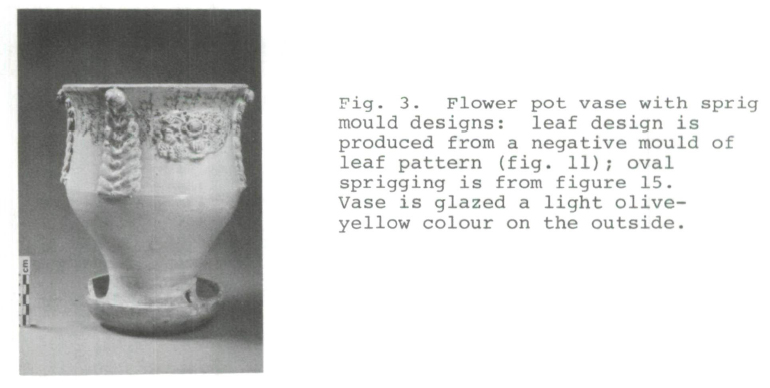 Display large image of Figure 3
Display large image of Figure 3Sprig moulds (figs. 4-3 0) from Huron Pottery, Egmondville, Ontario
 Display large image of Figure 6
Display large image of Figure 6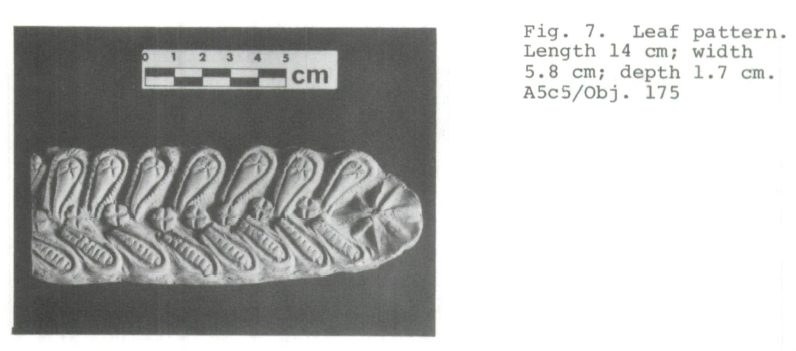 Display large image of Figure 7
Display large image of Figure 7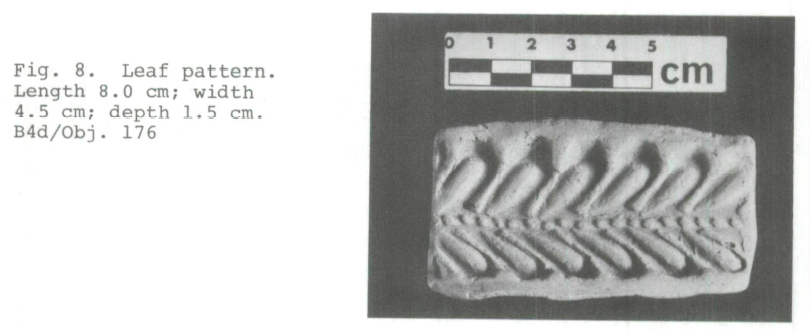 Display large image of Figure 8
Display large image of Figure 8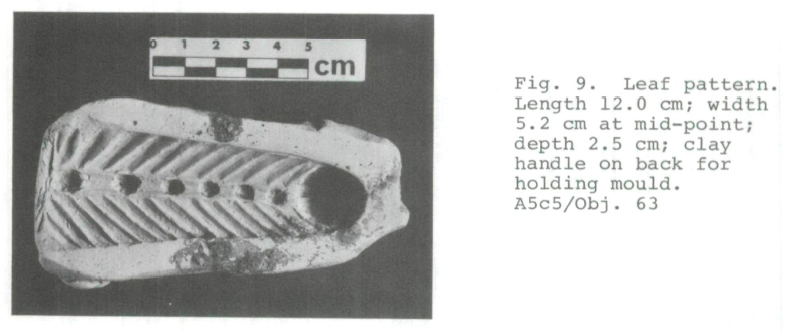 Display large image of Figure 9
Display large image of Figure 9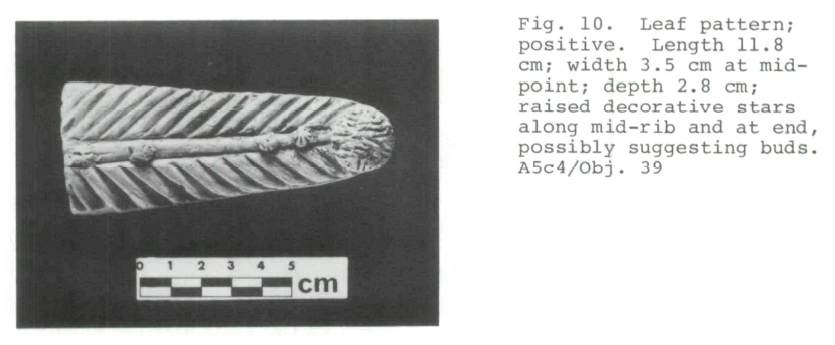 Display large image of Figure 10
Display large image of Figure 10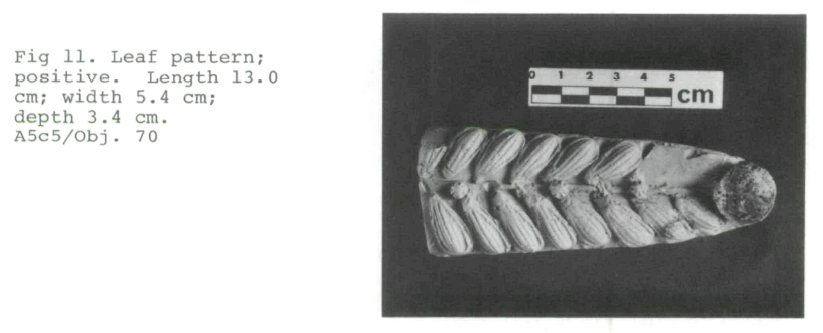 Display large image of Figure 11
Display large image of Figure 11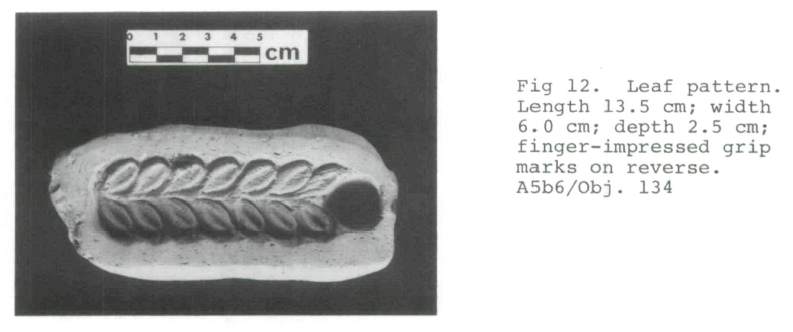 Display large image of Figure 12
Display large image of Figure 12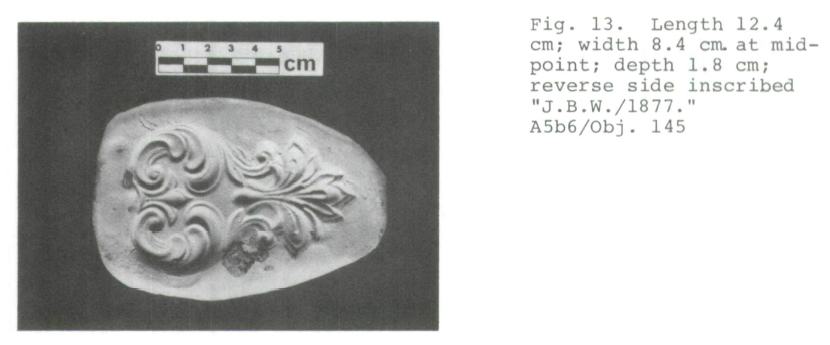 Display large image of Figure 13
Display large image of Figure 13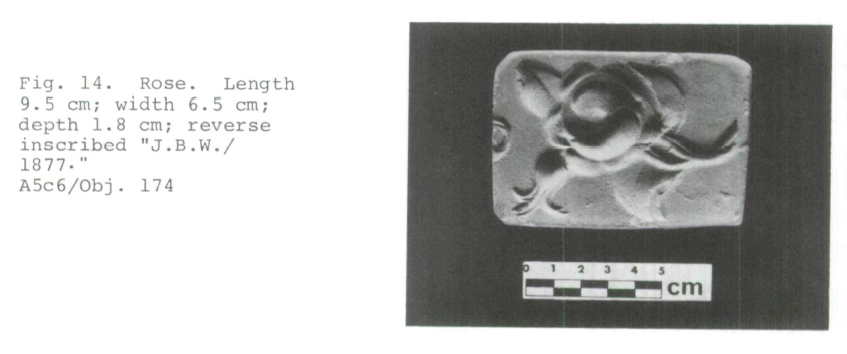 Display large image of Figure 14
Display large image of Figure 14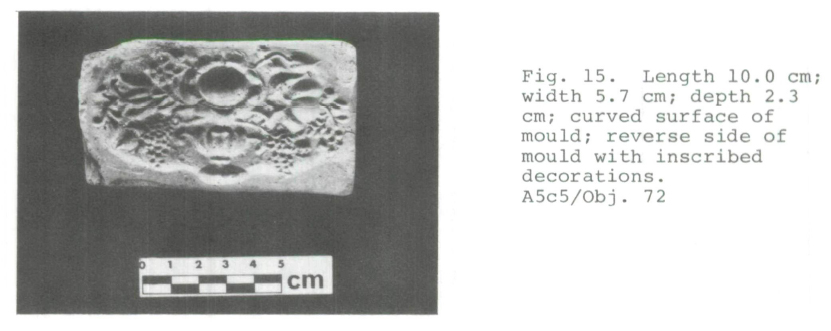 Display large image of Figure 15
Display large image of Figure 15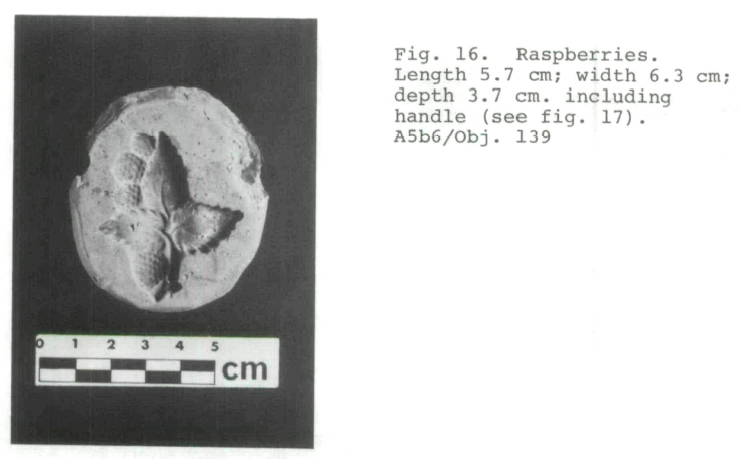 Display large image of Figure 16
Display large image of Figure 16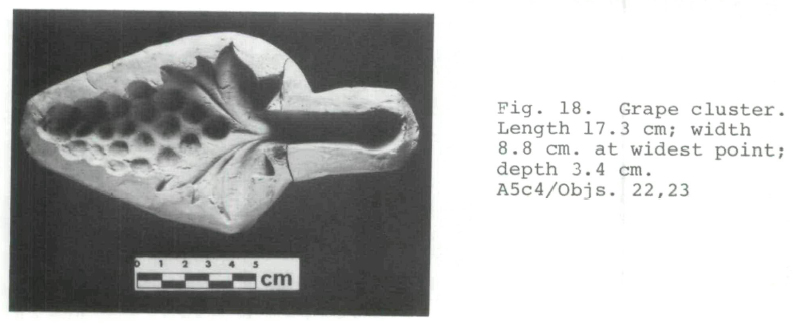 Display large image of Figure 18
Display large image of Figure 18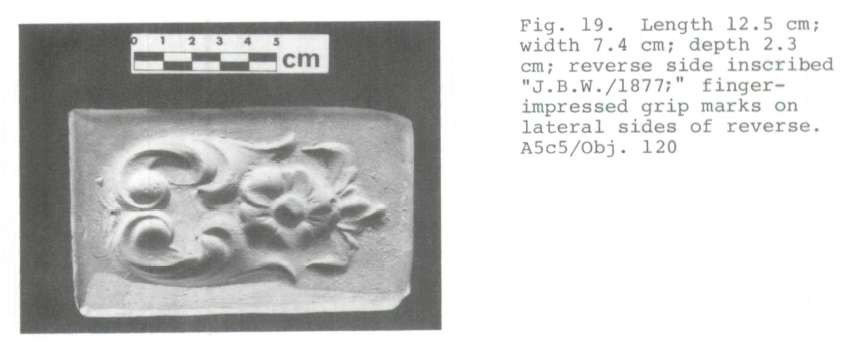 Display large image of Figure 19
Display large image of Figure 19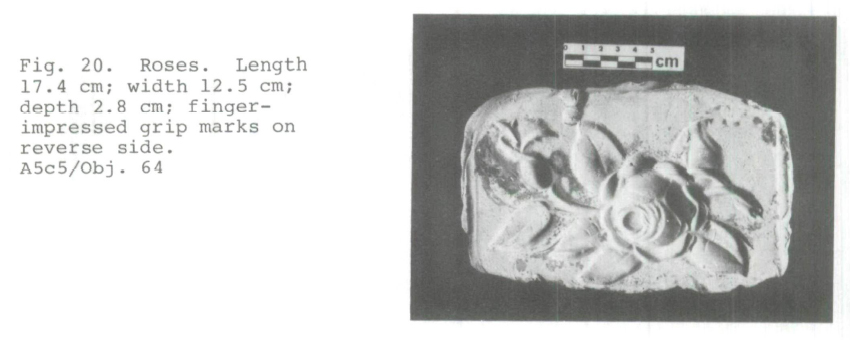 Display large image of Figure 20
Display large image of Figure 20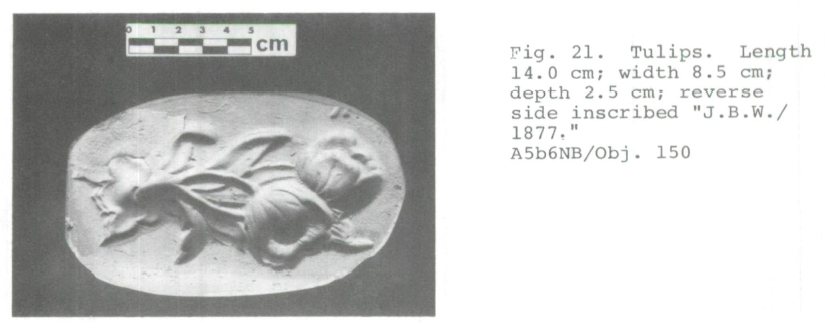 Display large image of Figure 21
Display large image of Figure 21 Display large image of Figure 22
Display large image of Figure 22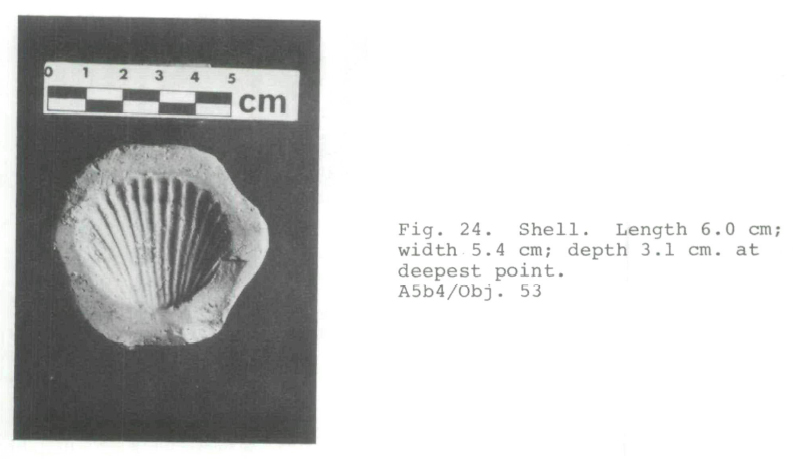 Display large image of Figure 24
Display large image of Figure 24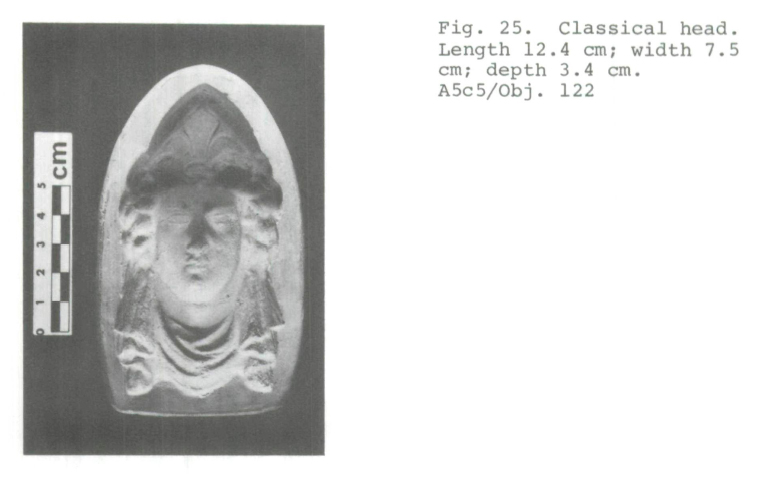 Display large image of Figure 25
Display large image of Figure 25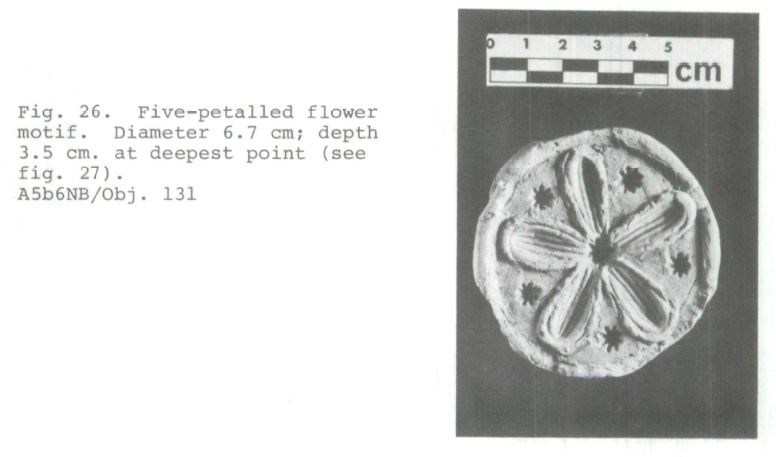 Display large image of Figure 26
Display large image of Figure 26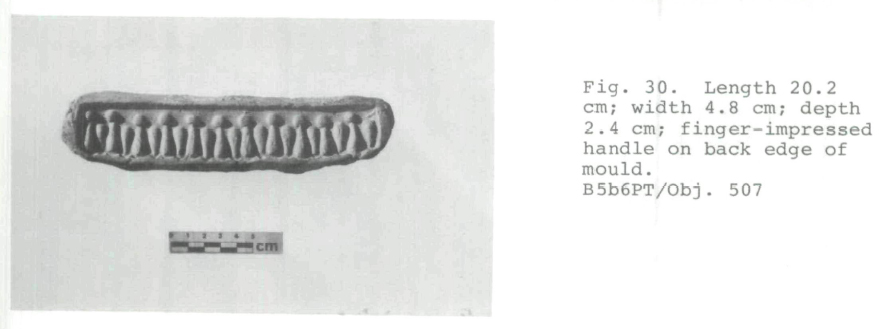 Display large image of Figure 30
Display large image of Figure 30Sprig moulds (figs. 31-33) from David Burns Pottery, Holmesville, Ontario
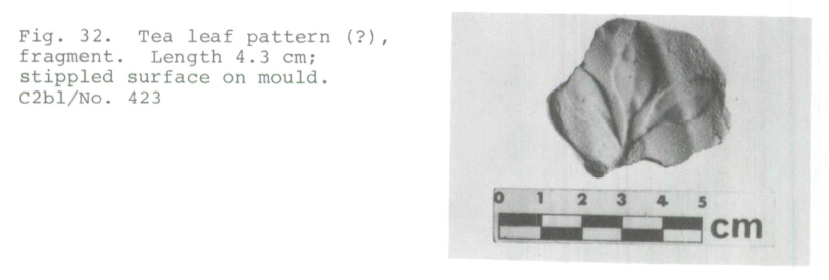 Display large image of Figure 32
Display large image of Figure 32